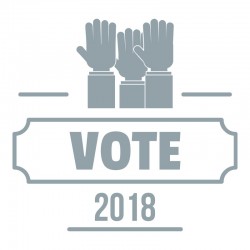I. Overview
December 1, 2016– the date that the U.S. Department of Labor (DOL)’s new overtime pay rules under the federal Fair Labor Standards Act (FLSA) take effect– is next week. [1] The new rules are one of the most significant changes affecting U.S. employers in more than a decade. The DOL estimates that more than 4 million workers will need to be reclassified from exempt to non-exempt as a result.
As you may already know, wage and hour lawsuits are the largest category of lawsuits filed in the U.S. and one of the fastest-growing. Last year, according to the DOL, 8,871 FLSA wage/hour lawsuits had been filed, as of September 30, 2015. In 2016, employers paid hundreds of millions of dollars in FLSA lawsuits. With the new rule taking effect, compliance with the FLSA and other wage/hour laws is more crucial to employers’ survival than ever.
These rules affect non-profits in a unique way. Unlike employers in the private sector, non-profits do not have a way to pass on the increased cost of labor to a customer. In some cases nonprofits may be bound to provide services at a contractually agreed upon rate, or may be constrained by their dependence on donations.
II. Are You Covered?
Before implementing changes to employee pay or classification, a nonprofit organization should first determine whether it is covered by the FLSA. Under the FLSA, there are two types of coverage: enterprise or named enterprise coverage, and individual coverage.
Enterprise Coverage
The FLSA applies to businesses with annual sales or business of at least $500,000, and two or more employees engaged in interstate commerce. With respect to non-profit organizations, FLSA “enterprise coverage” applies only to the activities performed for a business purpose that are in substantial competition with other businesses such as operating a gift shop or providing services for a fee. The DOL states: “[The FLSA’s enterprise coverage] does not apply to the organization’s charitable activities that are not in substantial competition with other businesses so income from donations used for charitable activities or membership fees do not count toward the $500,000 threshold.”
Revenue generated by a nonprofit organization that is used in furtherance of charitable activities is not considered for purposes of determining enterprise coverage. Note that under the FLSA, individuals generally may not lawfully volunteer in commercial activities run by a non-profit organization such as a gift shop.
Certain “named enterprises” are covered by the FLSA regardless of the total of their annual sales or business done or their non-profit status. These are hospitals, schools and preschools, government agencies, and businesses providing medical or nursing care for residents.
Individual Coverage
Even if your organization is not covered as an “enterprise,” your organization’s employees may be entitled to FLSA protections if any of them is “engaged in interstate commerce or in the production of goods for interstate commerce,” a very broad term. For example, an individual is covered if the employee makes or receives interstate telephone calls, ships materials to or receives materials or goods from another state, or transports persons or property to or from another state. Thus an employee, who calls donors in other states or orders supplies online, may be individually covered under the FLSA and entitled to its protections.
Employees at a nonprofit food bank whose job it is to sort donated goods received from out-of-state would also be considered as “individually covered” even if the organization itself is not a “covered enterprise” because it does not have commercial revenue.
Once the organization has determined whether it or any of its employees may be covered under the FLSA, it should heed the impending changes. Even if not covered by the FLSA, employers will still be covered by their state’s wage/hour laws.
III. What Changes Take Effect December 1, 2016?
Here are the key provisions employers covered by the FLSA need to be aware of:
New Salary Threshold
The Final Rule updates the salary threshold for determining whether an employee is exempt from the FLSA’s overtime pay requirements under the executive, administrative or professional “white collar” exemptions to: $913 per week, or $47,476 annually (note that the salary level test does not apply to teachers, doctors and lawyers). The prior salary threshold was $455 per week, or $23,600 annually.
Nondiscretionary Bonuses May Count Toward Salary Level
Employers may use nondiscretionary bonuses and incentive payments, including commissions, to satisfy up to 10% percent of the new standard salary level, if those payments are made on a quarterly or more frequent basis. (Remember that, even if an employee’s salary exceeds the salary threshold, he/she must still meet a “duties” test to fit within one or more of the “white collar” exemptions from overtime pay under the FLSA).
Higher Salary Threshold for Highly Compensated Employees
The total annual compensation requirement for workers classified as exempt under the “highly compensated employee (HCE)” exemption is now $134,004, up from $100,000 annual compensation. To qualify, the HCE must be paid on a salary or fee basis of at least $913/week, their primary duty must include performing office or non-manual work; and they must customarily and regularly perform at least one of the exempt duties or responsibilities of an exempt executive, administrative or professional employee. Nondiscretionary bonuses will not count towards reaching the salary of at least $913/week.
Automatic Salary Update Every 3 Years
The above salary thresholds in item #1 and #2 will be automatically updated every three years, beginning on January 1, 2020.
IV. What Nonprofits Should Do Now
Conduct a self-audit of all worker classifications
This self-audit should include a review of the salaries of “exempt” employees who are earning less than $913 per week ($47,476 annually) to determine whether the positions associated with those salaries will need to be reclassified. It is also a good idea to review those “exempt” employees above the new salary threshold of $913/week to ensure they meet the “job duties” test of one of the “white collar” exemptions. This self-audit should also include a review of anyone currently classified by the organization as an “independent contractor,” “consultant,” or “volunteer” to ensure they are properly classified as such. Misclassification of employees as independent contractors is one of the areas of greatest legal risk to employers at this time.
Update job descriptions
Ensure that your current job descriptions accurately reflect worker classifications of “exempt.” Remember, even if an employee is earning a salary at or above the salary threshold, he/she may still be entitled to overtime pay. The employee still needs to meet the duties tests of one of the “white collar” exemptions in order to be exempt from overtime pay.
Although the DOL decided not to make changes to the standard job duties tests, employers would be well-advised to pay particular attention to the job duties of workers classified as “managers” and “assistant managers” because much litigation has been brought by workers with those titles, claiming that they were actually performing non-exempt duties, notwithstanding their lofty titles.
Review Your Highly Compensated Employees
You must ensure that the highly compensated positions still qualify for the exemption (i.e., they are earning annual compensation of $134,004 which includes at least $913/week on a salary or fee basis; their primary duty includes performing office or non-manual work; and they customarily and regularly perform at least one of the exempt duties of the “white collar” administrative, executive or professional exemptions).
Determine the financial and budgetary impact on your organization.
If you determine that you must convert some “exempt” employees to non-exempt status, decide how you will address it.
Ask yourself these questions:
- Will the organization need to staff differently, hire more people working fewer hours, restrict the use of overtime, issue or re-issue policies and procedures addressing off-the-clock work to ensure that workers converted to non-exempt are no longer working before and after scheduled hours (i.e., sending and responding to emails and texts on weekends), train managers on new practices, and/or make other staffing adjustments?
- Will you seek to renegotiate or reopen government contracts or grant amounts to obtain higher reimbursement rates in view of anticipated increased costs?
- Will you conduct targeted solicitations of donors for additional staff funding?
Decide how you are going to implement these changes.
- Are you going to reclassify some or all currently exempt employees earning salaries below $913/week as non-exempt?
- Are you going to increase the salaries of currently exempt employees who meet the job duties test for a “white collar” exemption up to the salary threshold to maintain their exemption?
- Will you limit overtime pay?
- Will you reduce staff, hire more part-time staff to avoid overtime pay, or readjust workloads?
- Will you convert salaried non-exempt employees to hourly?
- Will you reduce a non-exempt employee’s base pay, by using a lower regular rate of pay and paying expected overtime pay?
- Will you implement other measures?
Ensure proper time records are maintained for all non-exempt staff.
A failure to keep proper time records is an independent FLSA violation. Consider expanding time-keeping systems if needed to address a potentially much larger group of nonexempt employees than before.
Determine whether employees to be reclassified to nonexempt will no longer be eligible for certain benefits.
Consider how you are going to communicate the changes to employees to be reclassified as nonexempt to mitigate the impact on employee morale when employees previously classified as exempt may view a reclassification to non-exempt status as a demotion.
Consider how to address to wage compression issues.
If you raise the salaries of currently exempt employees to the new salary threshold, what is the rippling effect on higher salaries in the organization? Must any of those salaries of higher paid employees now be bumped up to fairly compensate the supervisors of the employees whose salaries have just been brought up to the salary threshold?
Determine how State laws will affect any changes you plan to implement.
Regardless of whether an organization or its employees is covered by the FLSA, employers must still also comply with their own States’ labor laws. Confer with your employment counsel about your State’s laws. Does your State require employers to provide advance notice to employees before making changes to wages? In New York, for instance, employers must provide at least 7 days’ notice before making any changes to the written notice of pay rate unless the paystub will reflect that change, and must notify an employee in writing before reducing wages. Many States’ minimum wages will increase in 2017 so employers need to be alert to those developments as well.
V. DOL Guidance for Not-for-Profits on Final Overtime Rules
The U.S. Department of Labor has issued two pieces of guidance specifically for not-for-profits, including a reminder about the federal law concerning the use of volunteers. Note that States may also have their own laws regarding the use of volunteers, as New York does, and employers will need to comply with State laws and court decisions in those jurisdictions.
Links to the U.S. DOL guidance sheets are attached here:
https://www.dol.gov/sites/default/files/overtime-nonprofit.pdf https://www.dol.gov/whd/overtime/final2016/nonprofit-guidance.pdf.
VI. Will Change in Political Winds Affect Rule?
On November 22, 2016, a federal court judge in the United States District Court for the Eastern District of Texas, an Obama appointee, is expected to rule on injunctions in two separate, now consolidated lawsuits, challenging the Department of Labor’s new overtime rule and seeking to prevent it from taking effect on December 1st. One lawsuit was brought by 21 States and the other was brought by more than 50 business groups.
In September, the U.S. House of Representatives passed a bill that would delay implementation of the final overtime pay rule for six months (see H.R. 6094, the Regulatory Relief for Small Businesses, Schools and Nonprofits Act). Notwithstanding such pending action by the House and a similar bill introduced recently in the Senate, President Obama is likely to veto any such legislation.
Even assuming the Judge denies the injunction and President Obama vetoes the proposed legislation, it is anyone’s guess whether the Final Rule will later be reversed or modified in some respect, including the automatic salary increases every three years, with a Republican President in 2017. However, for now, employers must hunker down and implement changes to be compliant with the December 1st deadline.
VII. Some Final Thoughts
A number of non-profits have voiced objections to this new rule on the grounds that increased staffing costs will make it more difficult for them to execute their mission and provide contractually mandated programs. At least one commentator, however, has questioned whether nonprofit organizations that underpay or do not pay their workforce are undermining their own missions of helping those in need. See, e.g., http://www.theatlantic.com/business/archive/2016/08/the-plight-of-the-overworked-nonprofit-employee/497081/. The current federal salary threshold of $23,660 is below the poverty line for a family of four. Is it incongruous for a non-profit to oppose an increase in wages for its own staff above the poverty line while promoting the betterment of the world or a particular group as part of its mission? Or put another way, how can the shoemaker provide shoes to others when he cannot provide shoes for his own children? This is a point for all non-profits to consider while they seek to better the world in some way.
[1] * Note that the DOL has carved out a limited-time, non-enforcement policy exception for Medicaid-funded services for individuals with intellectual or developmental disabilities in residential homes and facilities with 15 or fewer beds. With respect to those facilities, the DOL will delay enforcement of the Final Rule until March 18, 2019.
-
Perlman & Perlmanhttps://www.staging-perlmanandperlman.com/author/nancyisrael/
-
Perlman & Perlmanhttps://www.staging-perlmanandperlman.com/author/nancyisrael/
-
Perlman & Perlmanhttps://www.staging-perlmanandperlman.com/author/nancyisrael/
-
Perlman & Perlmanhttps://www.staging-perlmanandperlman.com/author/nancyisrael/












